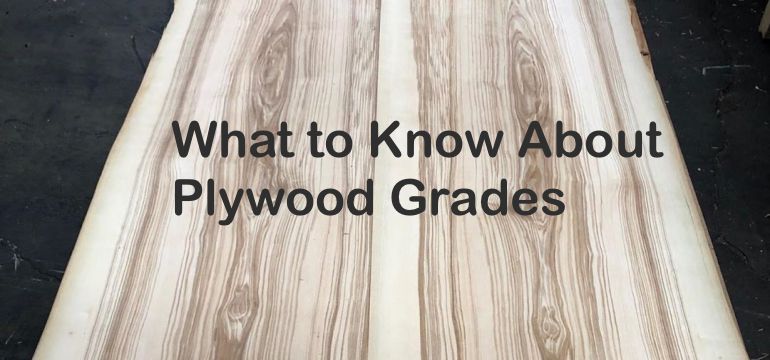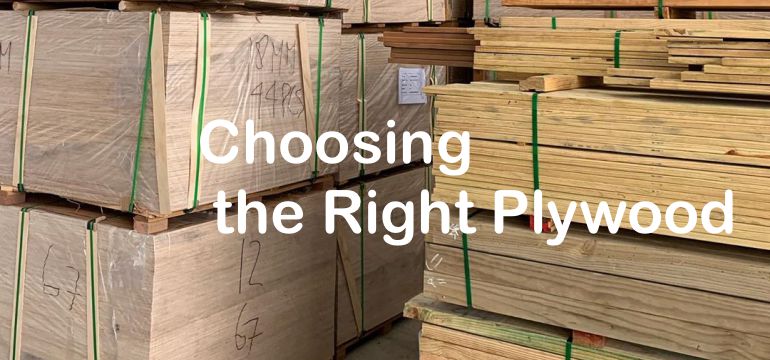When it comes to your next building project, you want to ensure that you have all of the right materials. A quick stroll through the local home improvement store, lumber yard can prove to be overwhelming.
You’re inundated with letters and numbers that other people seem to understand inherently. What type of wood do you really need to finish your project? After all, there can be a significant cost difference between some of the different materials.
Depending on what you are making, BCX plywood is likely to be a perfect choice. However, you should really have a thorough understanding of how plywood is graded and sold before you make a final decision. What is BCX plywood exactly? Read on for more information on the different types of plywood you can choose from.
Scoring the Veneers of Plywood
If you’ve never tackled an outdoor building project, you probably had no idea that there are different grades of plywood. However, the industry has to have some way of differentiating one type of wood from another.

These large sheets of wood are distinguished by a letter system ranging from A through D.
The letter X tacked onto the end of the rating stands for exposure. This final letter means that the plywood can withstand moisture for a short duration, such as while a home is under construction.
In this scoring system, the first letter describes the veneer on the face of a sheet of plywood.
Plywood with the first letter A indicates that the veneer on the face is going to be the highest quality. It is typically defect-free or has fillers that cover up imperfections like knots. The surface is going to be smooth, sanded, and ready to receive a fresh coat of paint.
A-grade plywood is typically considered cabinet-grade and is used for much more polished projects than some of the other categories.
Going down one category to BCX plywood, you can expect to have a small difference in quality. You will find more knots and small splits in the face of this grade of plywood. A smooth surface is still the norm for this category.
ACX vs. BCX plywood are normally very similar, but the BCX is typically just those sheets that couldn’t quite make the cut for an A grade.
Letters C and D indicate a much a lower quality veneer than those found in ACX and BCX plywood. You can expect more knots, splits, discolorations, and other imperfections on the surface of the wood.
These lower tiers are typically not sanded, and imperfections are not filled, making them ideal only for construction purposes where appearance is not that significant.
The Back of the Plywood
Scoring the backside of the plywood is just as important as scoring the face veneer. This is done with the exact same scoring system, so you may want to consider what your project really needs.
If you are building a cabinet or a piece of furniture that opens inside, you may want to get something that is a higher grade on both sides. ABX plywood is common in this type of application.
Much like the visible veneer of the wood, each letter denotes a significant shift in quality and character. Most people prefer BCX plywood because it has a nicer veneer on one side while the other is still a great choice for general construction.
When you move down into the D category, it may not hold up as well. This is particularly true if you are planning to install the plywood anywhere where it will be exposed to the elements.
When it comes to CDX plywood vs. BCX plywood, you can usually see a significant difference in quality. CDX plywood is going to have a lower quality veneer on the face of the plywood, as well as a much rougher texture on the back. As you might imagine, plywood with lower scores like this will typically be less expensive.
The trick to finding the right sheet of plywood for your project is to consider how much of each veneer you will see. If you are planning to use BCX plywood for a subfloor or an exterior project, the C-grade on the backside may not be a major issue.
What is BCX Plywood?
Now that you understand how plywood is graded let’s take a look at one of the more popular categories: BCX plywood.
This type of plywood is excellent for projects that require a finished surface on one side but can allow for more texture on the back. The finished surface is just below cabinet-grade, making it easy to paint or finish if you choose to.
Keep in mind that BCX plywood can come in a wide variety of sizes, making it perfect for any building project. The most common sizes include ¾”, 5/8”, and ½” thicknesses.
It is also available in a wide variety of hardwood and softwood species including oak, birch, cherry, walnut, and more. You can certainly design a great piece using BCX plywood with just a coat of urethane finish.
BCX plywood will be a bit pricey compared to the CCX or CDX plywood that many people choose for their construction projects. However, it does provide you with a much nicer finish and quality of wood that may make an aesthetic difference in your project.
BCX Plywood for Subfloor
One of the most common uses for plywood is for subflooring in new construction homes. Many people want a high-quality and sturdy wooden subfloor that will be able to support weight for the decades to come. Others are looking for plywood to put inside of a shed or another outdoor building that will be exposed to the elements. No matter what the application is, you should be informed on how to choose the right type of plywood.
For indoor projects, most homeowners do not plan to leave the plywood visible. It will most often be covered up by vinyl, carpet, or hardwood floors. As a result, you don’t typically require a higher grade of plywood.
BCX plywood for subfloor might be a little excessive. It could boost your budget without providing many benefits to your home. Instead, most people opt for a C or D grade plywood on both veneers.
An outdoor shed maybe a little bit different. Most people do not lay floor coverings over their shed subfloor, leaving the raw plywood exposed. You may prefer a cleaner grade of wood since this is something that you will have to look at whenever you access your shed. Since the plywood will be coming into contact with the ground when building a shed, make sure to use pressure-treated plywood only.
It may also be easier to sweep your shed clean with a higher grade of plywood. It’s much less likely that dirt and debris will get trapped in open knots and splits with BCX plywood than with CDX plywood.
BCX Plywood for Exterior
Building an outdoor project means that your wood will have to withstand the elements. The X at the end of BCX implies that it was formed using adhesives to withstand a little moisture. However, eventually it have to be covered by something more weather-resistant (bricks, shingles or siding).
So, this means that BCX plywood should only be used inside or in place that will not be exposed to water directly.
Because of its chemical properties, you should use OSD (or OSB) plywood. It is excellent for exterior applications.
Still, If you want to use BCX or CDX plywood in these outdoor applications, there are a few things you should look out for. First, you want to look for a plywood that has been pressure treated.
A sheet of plywood that has been pressure treated has a preservative that makes it more resistant to rot, fungus, and termites. If you want your building project to stand up to the test of time, pressure treated wood should be considered a necessity (In this way, It can survive outside for several decades without a protective finish). Keep in mind that it may have a green tint.
A project that requires material to hold up to more than just your average rainfall might require marine-grade plywood. Marine-grade plywood is made of sheets with no knots, giving you more peace of mind for your project. Standard exterior plywood is permitted to have knots on the layers in between the two veneers.
This allows water to settle in between the layers and can lead to early decay in the plywood. In contrast, marine-grade plywood is ultimately is made for complete immersion in water, though many people do not necessarily need this level of protection.
Choosing the Right Plywood
The success of your next project ultimately depends on your ability to select the right type of plywood. When comparing ACX vs. BCX plywood or even CDX vs. BCX plywood, you need to know all of the major benefits and pitfalls.

While the price is certainly a factor in making the right selection, you also need to know the primary application for BCX plywood. Whether you need to install a new subfloor or create a kitchen cabinet, the scoring system for plywood will help you to make the right decision.
Next time you have a major project, walk through your local lumber yard with the confidence that comes from knowing that you are making the right choice.
- Painting Over Powder Coat and What You Need to Know - February 1, 2022
- How to Get Rid of Humidity in a Basement Without a Dehumidifier - December 17, 2021
- How to Fix a Crack in Drywall That Keeps Coming Back - September 22, 2021
